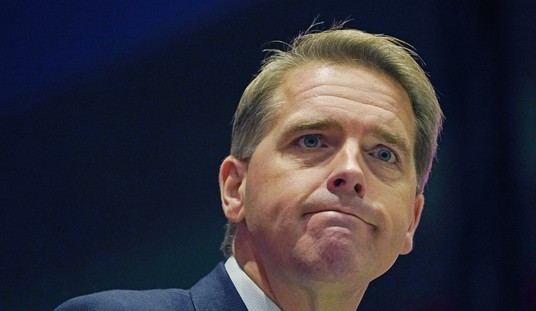Editor's note: This piece was co-authored by Jim Hop, Dr. Thomas Rastin and Anthony Storer is a finance/economics major and McNair Scholar at Northwood University.
Political commentary on the presidencies of Donald J. Trump and Joseph R. Biden Jr. often depends on the outlet covering the discussion. Whether one listens to Rachel Maddow on MSNBC or Sean Hannity on Fox News, the narratives surrounding the two administrations are starkly different. However, an objective assessment of the economy requires a closer look at the data rather than political rhetoric. Below, we evaluate ten key economic indicators that played a pivotal role in shaping the 2024 presidential election.
1. Inflation
Inflation proved to be one of the defining issues of the Biden administration. Over four years, cumulative inflation reached 20.66%, translating to an annualized rate of 5.16%. In contrast, during the Trump administration, inflation was significantly lower, with a cumulative rate of 7.26% and an annual average of 1.815%.
Despite early assurances that inflation would be "transitory," it remained persistent, weighing heavily on American households. This was a primary factor in Biden's failure to secure re-election.
2. Consumer Sentiment
The University of Michigan’s Consumer Sentiment Index is a key measure of economic confidence. Under Biden, the index averaged 68.6 per month, peaking at 77.6 in 2021 and dipping to 58.6 in 2022. Under Trump, the average was 93.2, including the COVID-19-affected year of 2020, when sentiment still averaged 81.5.
Recommended
Historically, the index’s average stands at 84.7. The significant drop in consumer sentiment under Biden reflected widespread concerns over inflation and economic uncertainty.
3. Small Business Confidence
Small businesses, responsible for employing over 60% of the U.S. workforce, showed stronger confidence during the Trump administration. The National Federation of Independent Business’ Small Business Confidence Index averaged 103.9 under Trump (including 2020) compared to 96.77 under Biden. The historical average is 98, meaning confidence under Biden consistently lagged behind expectations.
4. Regulatory Burden
The American Action Forum tracks new regulatory costs imposed on businesses. Under Biden, 1,149 new regulations added an estimated $1.8 trillion in compliance costs. By contrast, the Trump administration implemented 1,288 new regulations but at a significantly lower cost of $38 billion.
Trump has pledged to reduce regulatory hurdles, particularly those affecting the energy sector, a move that will likely be closely watched in his second term.
5. Unemployment Rate
Biden’s four-year average unemployment rate was 4.17%, peaking at 5.38% in his first year before dropping to 3.63% in year three. However, by the end of 2024, unemployment was rising again, reaching an average of 4.03%.
Trump’s first-term average was 4.86%, heavily impacted by the pandemic-induced peak of 14.8% in 2020. Excluding that year, unemployment under Trump was historically low.
6. GDP Growth Rate
Biden’s average annual GDP growth rate was 3.21%, bolstered by a strong 5.8% first year, likely influenced by post-pandemic recovery. However, growth slowed to 1.9% in 2022, 2.54% in 2023, and 2.45% in 2024.
Trump’s average GDP growth was 1.45%, dragged down by a -2.2% contraction in 2020. Excluding that year, GDP growth averaged 2.67% during his first three years.
7. Employment Levels
At the start of Biden’s term, 150.03 million Americans were employed. By December 2024, that number had grown to 161.66 million—a net gain of 11.63 million jobs. However, compared to February 2020’s pre-pandemic level, employment had only grown by 2.9 million.
During Trump’s term, employment began at 152.08 million employed in January 2017 and peaked at 158.76 million in February 2020 before plunging to 133.4 million in April 2020, due to COVID-19. By the end of 2020, employment rebounded to 149.83 million, though still below pre-pandemic levels.
8. Border Policy
Illegal border crossings surged under Biden. Since the start of fiscal year 2021, U.S. Customs and Border Protection (CBP) recorded more than 10.83 million encounters, including 8.72 million at the southern border. By comparison, under Trump, CBP reported just over 3 million total encounters, with 2.37 million occurring along the southwest border.
9. Stock Market Performance
A comparison of major stock indices shows that market growth was stronger under Trump. From January 20, 2017, to January 20, 2021, Trump’s market returns outpaced Biden’s in the same period from 2021 to 2025:
S&P 500: Trump (+69.59%), Biden (+55.68%)
NASDAQ: Trump (+142.24%), Biden (+45.87%)
Dow Jones: Trump (+57.30%), Biden (+39.44%)
Russell 2000: Trump (+59.83%), Biden (+5.33%)
When adjusted for inflation, Biden’s returns were even less competitive:
S&P 500: Trump (+57.93%), Biden (+29.03%)
NASDAQ: Trump (+125.59%), Biden (+20.89%)
Dow Jones: Trump (+46.49%), Biden (+15.56%)
Russell 2000: Trump (+48.85%), Biden (-12.70%)
10. National Debt
The national debt grew significantly under both presidents. Under Biden, the debt increased by $8.5 trillion, while under Trump, it rose by $7.38 trillion. As a percentage, the debt grew by 31.58% under Biden and 37.7% under Trump. By early 2025, the national debt reached $36.38 trillion, with the Trump and Biden administrations collectively responsible for 46% of it.
As political strategist James Carville famously stated in 1992, “It’s the economy, stupid.” Despite some positive indicators during Biden’s presidency, the broader economic picture—high inflation, diminished consumer confidence, and regulatory burdens—ultimately led voters to favor a return to Trump’s policies.
The American electorate expressed a preference for President Trump’s economic management, particularly among consumers and small businesses. Concerns over inflation, border security, and economic growth were decisive factors in President Biden’s failure to secure the Democratic nomination and ultimately Vice-President Harris’s loss in 2024.
As President Trump returns to office, the focus shifts to whether he can reinvigorate economic growth while simultaneously reeling in government spending and the national debt. The expectations are high, and the challenges ahead are significant. It is up to President Trump to deliver on his promises once again.
We are optimistic he will!
Dr. Timothy G. Nash is director of the McNair Center at Northwood University, Mr. Jim Hop is Entrepreneurship chair and a McNair Fellow at Northwood University. Dr. Thomas Rastin is a retired business executive from Ohio. Mr. Anthony Storer is a finance/economics major and McNair Scholar at Northwood University.

























Join the conversation as a VIP Member